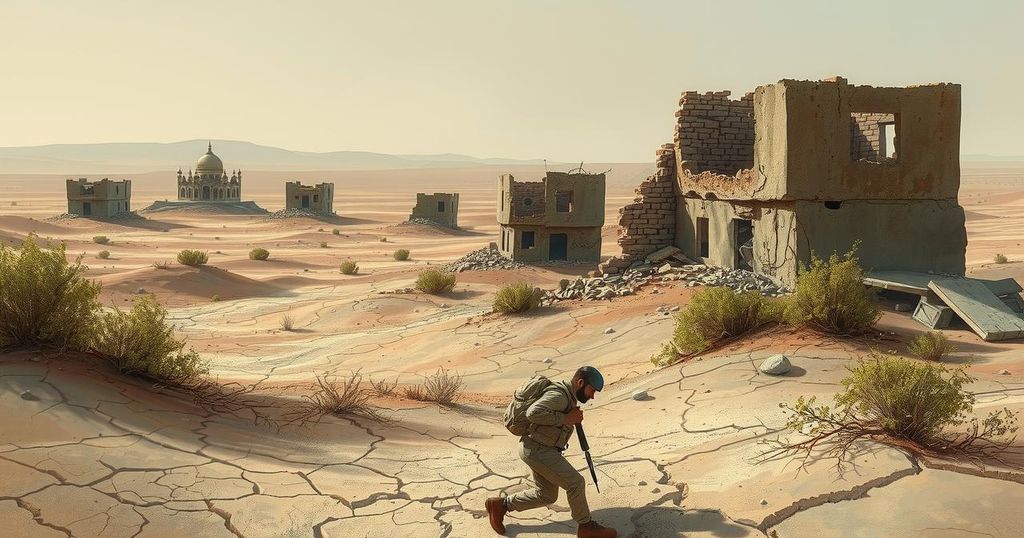The Houthi movement is at war with the U.S., as acknowledged by their foreign minister, Jamal Amer. With renewed U.S. airstrikes targeting Houthi leadership, this conflict escalates amid broader regional tensions. The ongoing situation reflects the complexities of Yemen’s humanitarian crisis and the Houthis’ relationship with Iran. The U.S. aims for effective military intervention to restore stability in essential maritime routes.
The Houthi movement, classified by the United States as a terrorist organization with backing from Iran, has escalated tensions in the region. Following missile strikes targeting Israel from Houthi-controlled territory, U.S. President Trump reiterated demands for Iran to cease its support of the Houthis, predicting their annihilation. Nick Schifrin explored the potential outcomes of new U.S. airstrikes against Houthi positions, which are intended to be more effective than prior military efforts.
The United States continues its military operations in the Red Sea, having recently conducted an uptick in airstrikes against Houthi targets in Yemen, with a notable shift towards targeting Houthi leadership. During an interview, Houthi Foreign Minister Jamal Amer acknowledged, “At the end of the day, we are at war with America,” confirming that conflict will result in casualties, though he asserts that they will not involve senior leadership.
The Houthis claim that U.S. airstrikes have resulted in significant civilian casualties, including children. However, U.S. officials reject these allegations, insisting that the Houthis bear responsibility for any consequences due to their aggressive actions. A series of events involving the Houthis, including seizing commercial vessels and kidnapping sailors, has heightened the U.S. military’s resolve in the region.
The Houthi attacks on maritime assets appear to have been motivated by a desire to support Gaza amid the ongoing humanitarian crisis there. President Trump ordered renewed airstrikes upon learning that the Houthis vowed retaliation for Israel’s blockade of aid to Gaza. Defense Secretary Pete Hegseth indicated, “This will continue until you say, we’re done shooting at ships.”
When questioned about the potential for extending their attacks to U.S. bases, Amer indicated that the conflict may escalate in response to ongoing military actions from the U.S. against Yemen. The Houthis, who seized the Yemeni capital, Sanaa, in 2014, remain firmly entrenched in power despite a Saudi-led coalition’s sustained military efforts over the years.
Officials indicate that the U.S. military aims to reaffirm freedom of navigation in critical waterways, which is seen as fundamental to national interests. Hegseth articulated, “We don’t care what happens in the Yemeni civil war,” signifying a focused approach on preventing assaults on commerce rather than a direct involvement in internal conflicts.
While the Houthis maintain sovereignty, they also reflect a complex relationship with Iran, whom they deny receiving orders from. Houthi leaders dismiss the notion they are merely puppets of Iranian influence, asserting the importance of their independence in decision-making.
The Houthis face accusations of neglecting humanitarian principles, including allegations of detaining U.N. workers and seizing aid. Amer contends that the detentions were minimal and aimed at protecting aid resources that were endangered during conflict periods. Despite the humanitarian crisis in Yemen, the internal strife continues as U.S. airstrikes target forces aligned with the Houthis, all in hopes of mitigating their influence and military capacities.
The current conflict involving the Houthi movement highlights the intricate dynamics of regional politics, U.S. military strategy, and the ongoing humanitarian crisis in Yemen. With the U.S. restating its commitment to suppress Houthi aggression, the situation remains volatile as both sides brace for further escalation. As the Houthis navigate their self-claimed independence from Iran while engaging in armed conflict, the prospects for peace in the region appear increasingly uncertain.
Original Source: www.pbs.org




